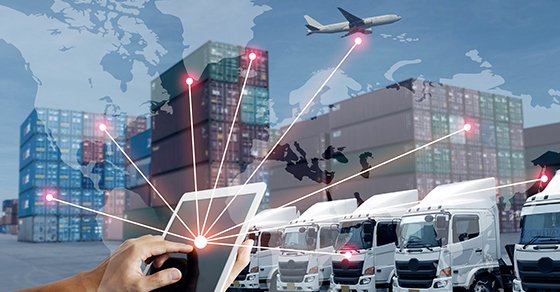Supply Chain Software Can Help Digitize The Dilemma
 It’s a dilemma that’s been in the news and on business owners’ minds for a while now. The COVID-19 pandemic, along with other world events, have strained supply chains challenges both global and national. And, throwing gasoline on the fire, cyberattacks have threatened to further disrupt the smooth flow of materials, products and fuel. Supply chain software might me the answer we’ve been looking for.
It’s a dilemma that’s been in the news and on business owners’ minds for a while now. The COVID-19 pandemic, along with other world events, have strained supply chains challenges both global and national. And, throwing gasoline on the fire, cyberattacks have threatened to further disrupt the smooth flow of materials, products and fuel. Supply chain software might me the answer we’ve been looking for.
These heightened risks and uncertainties require high-level, real-time visibility into your company’s supply chain — from beginning to end. This tends to be difficult to achieve with simple spreadsheets or old-fashioned paper documentation. That’s why more and more businesses are digitizing their supply chains to improve oversight, increase efficiency and manage risk.
Handling The Chain
Generally, companies are automating three key business areas:
- Procurement.
- Accounts receivable.
- Inventory management strategy.
To do so, they’re implementing the technological tools necessary to better communicate and coordinate with all parties along their supply chains.
One such tool is supply chain management (SCM) software. Also known as logistics software, SCM solutions help manage how and when materials, products and equipment are procured. This type of supply chain software is most prevalent in the manufacturing and distribution industries. However, a carefully chosen and scaled SCM solution could help many types of businesses predict demand spikes, mitigate inventory and labor shortages, and better manage transportation issues.
Managing The Risk
For more in-depth supply chain monitoring, another tool to consider is supply chain risk management (SCRM) software. You can use SCRM solutions to ensure you’re working with vetted suppliers and independent contractors who have the proper insurance, training and qualifications. Typical features include:
Supplier/contractor evaluations
Create standardized assessments and customize question weights and thresholds based on relevance.
Risk management
Monitor suppliers and sites, configure risk scores, get critical failure points, and track risk-mitigation progress.
Mapping
Visualize your supply chain using maps, assess potential vulnerabilities and prioritize supplier workflows.
Event monitoring
Track events across the supply chain and create “what if” scenario modeling. Users can load sites and points of interest, as well as monitor local impacts via news outlets, social media and regulatory agencies.
Investing Carefully
Investing in any type of software calls for a close and careful look at your company’s needs, users, security risks, and the short- and long-term costs involved. That said, maintaining a strong supply chain is imperative in today’s business environment and the right technology could help. Our accounting company can assist you in weighing the risks vs. advantages of any technology investments you’re currently making or considering.
